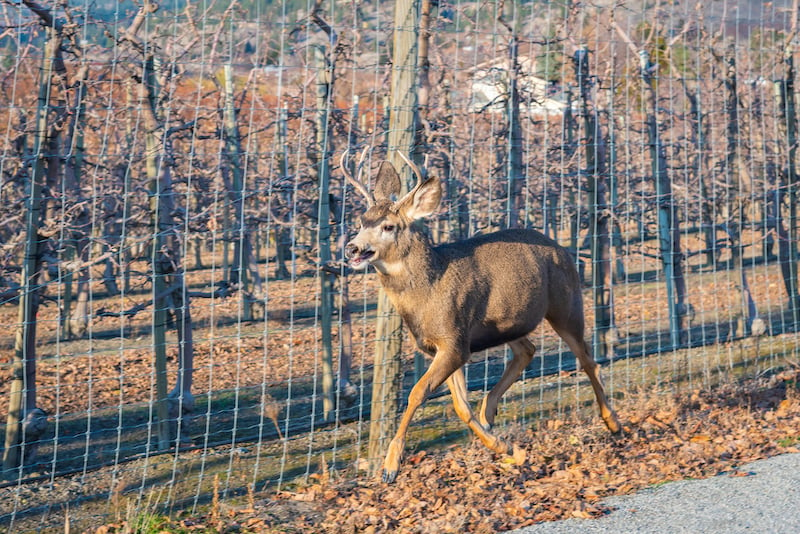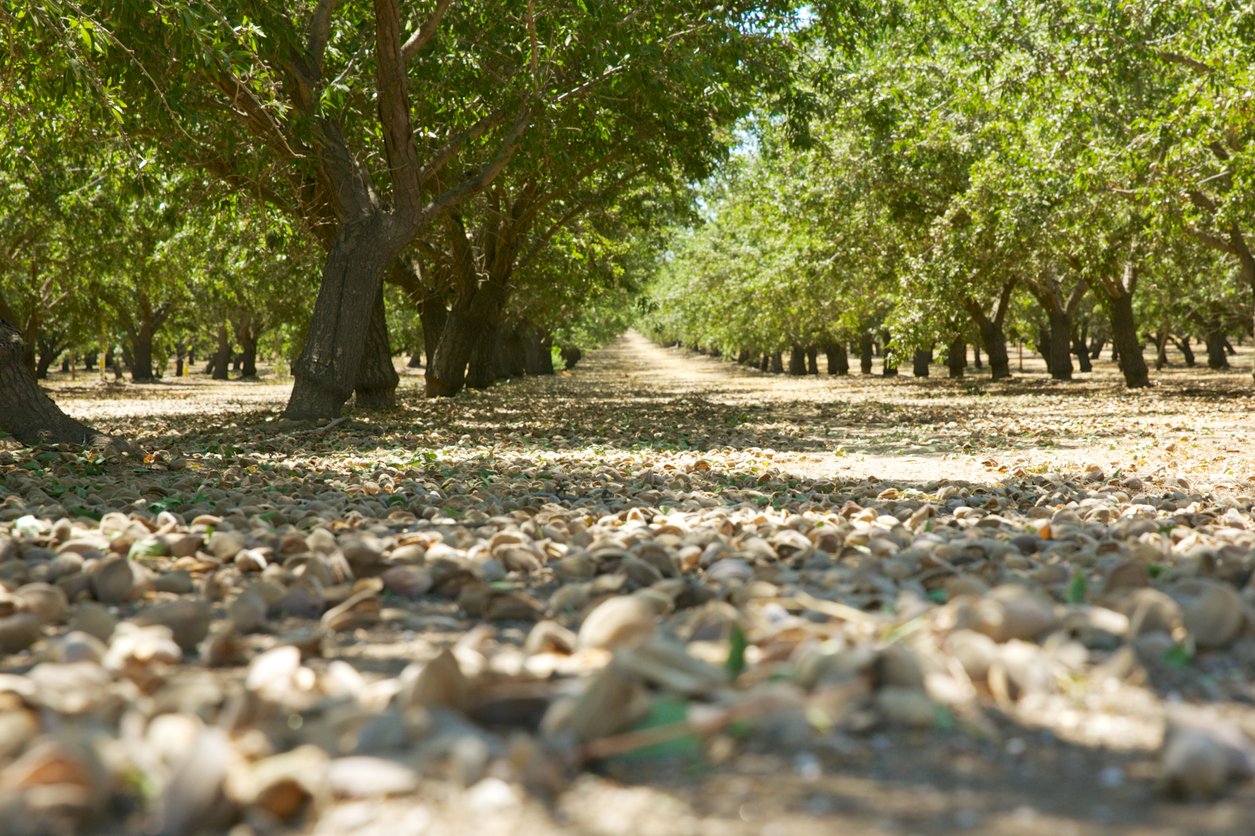Orchard managers often find themselves fighting several kinds of intruders simultaneously. If insect pests and even human trespassers weren’t enough to worry about, many growers must also contend with larger wildlife wreaking havoc on their crops. Deer, feral swine (wild pigs), raccoons, nutria, beavers, and more can all negatively impact crop health and yield as well as infrastructure and equipment.
Here's what experts recommend for protecting orchards from wildlife.
Don't just fence—fence right
Fencing is especially important for new and young trees, as deer seem to be among the main culprits for the demise of new plantings. Nathan Graveline, Wildlife Biologist Supervisor for the California Department of Fish and Wildlife (CDFW) recommends preventative fencing.
“If a farmer plants a new orchard and doesn’t fence it, the deer—and possibly even elk—in the area are going to come and nip the terminal buds right off the trees, which essentially ruins the tree,” says Graveline.
Not only do fences protect young trees from deer eating new growth, but they reduce the raking of antlers, which can decimate mature and young trees alike.
The ideal fence consists of a few factors: it’s eight feet tall, buried beneath the ground to prevent digging underneath, has good gates that remain closed, and is well maintained. For those who can’t get the fencing underground, proper tension on the bottom of the fence can prevent deer and other animals from easily passing beneath it.

Hot wire—or electric fencing—is also an option.
“Some producers can get by with two to three wires, with some using up to ten,” says Derek Milsaps, District Supervisor and Wildlife Biologist for the United States Department of Agriculture’s (USDA) California Program.
Some growers stagger with hot wire, adding a second “inside” fence a few feet away from the first, which creates the illusion for the deer that this barrier is thicker, and thus prevents them from jumping over it.
For growers only replacing a tree here and there within a mature orchard—or who otherwise find the cost of fencing unwarranted—cages are a viable option for protecting new plantings. Spray repellents can provide an extra layer of protection when combined with cages.
Take extra care at harvest time
Nuts left in the orchard after harvest shaking are particularly susceptible to wildlife damage or loss. Feral swine, raccoons, coyotes, crows, ravens, doves, and more are often found eating the nuts on the ground before the crop is swept.
The rooting of wild pigs is particularly destructive and can cause damage to both the orchard floor and irrigation infrastructure by creating ruts and holes that damage water lines and pipes. Tree nuts fall into the holes and become impossible for the sweeper to pick up, which results in crop loss, and irrigation-related repairs can be costly. Gnawing animals, including coyotes, foxes, raccoons, rabbits, and squirrels, can also destroy drip lines.

In fact, in 2018 the California Department of Food and Agriculture's Wildlife Services Program reported more than $280,000 loss in fruit and nut tree and drip line damage. The sooner growers are able to clear the orchard floor, the less opportunity wildlife will have to eat away at the harvest.
Know your permitting options and limitations
Both the California Department of Fish and Wildlife (CDFW) and the United States Fish and Wildlife Service (USFWS) can issue depredation permits, depending on what kind of wildlife a grower needs to remove.
CDFW issues permits for species including deer, elk, feral swine, beavers, bears, bobcats, mountain lions, turkeys, and grey squirrels. USFWS can issue permits for migratory birds, with the common raven and mourning dove being the most common problems for growers.
The key thing to remember about permits for depredation, however, is that growers must demonstrate preventative measures—such as fencing—prior to applying. Consider this option as the last line of defense.
“[Depredation permits] are a temporary situation, where growers have extreme damage and they’re trying to curtail it,” says Graveline. “It doesn’t provide a long-term solution at all.”
Consider new additions to your wildlife toolkit
USDA-WS uses other tools to identify and remove invasive wildlife, such as trail cameras and night vision. Animals can be removed with the use of live traps or leg or foot snares, not just with firearms or bait stations.
Some growers have used noise-producing devices, lighting, human activity, and scarecrows containing human scent, with varying degrees of success.
Of all the available options, both Graveline and Milsaps agree that fencing is the best choice.
“[Growers] are faced with many different things that can affect them, and [they] are very hardworking individuals who need to make a profit to survive. [They] know they’re going to have losses, but they must always look for a way to minimize them,” says Milsaps.
“Once you add up the numbers of tree, planting, and time costs,” says Graveline of potential loss due to wildlife pests, “there’s no time to wait.”
